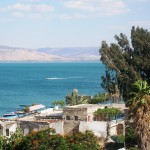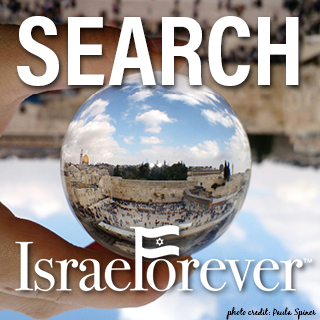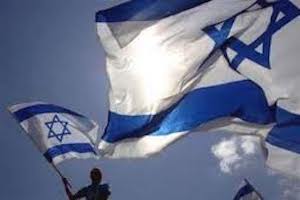Exploring Israel: The Sea of Galilee
By Sean Young, Hebrew Language Blog, Transparent Language
Click here for the original article.

The Sea of Galilee (Hebrew: יָם כִּנֶּרֶת), is the largest freshwater lake in Israel situated near the Golan Heights, in the Jordan Rift Valley. It is also the lowest freshwater lake on Earth (At levels between 215 metres (705 ft) and 209 metres (686 ft) below sea level). The lake is fed mainly by the Jordan River that flows from the north and by underground springs.
The Hebrew name, יָם כִּנֶּרֶת comes from the Old Testament or Hebrew Tanakh “sea of Chinnereth” in Numbers 34:11 and Joshua 13:27. Chinnereth was listed among the “fenced cities” in Joshua 19:35.
In the New Testament the term “sea of Galilee” is used in the gospel of Matthew 4:18; 15:29, the gospel of Mark 1:16; 7:31, and in the gospel of John 6:1 as “the sea of Galilee, which is the sea of Tiberias”, the late first century name. Sea of Tiberias is also the name mentioned in Roman texts and in the Jerusalem Talmud, and was adopted into Arabic as Buhairet Tabariyya.
Tourism

Today, tourism is the Sea of Galilee’s most important economic activity. The many historical and spiritual sites around the lake are visited by millions of local and foreign tourists annually.
Israel’s most well-known open water swim race, the Kinneret Crossing, is held every year in September, drawing thousands of open water swimmers to participate in competitive and noncompetitive events.
Tourists also partake in the building of rafts on Lavnun Beach, called Rafsodia. Here many different age groups work together to build a raft with their bare hands and then sail that raft across the sea. Other economic activities include fishing in the lake and agriculture in the fertile belt of land surrounding it.
For Christians
The Sea of Galilee attracts many Christian pilgrims, because, according to the New Testament, many of the miracles of Jesus occurred on its shores.
In April 2011, Israel unveiled a 40-mile (64 km) hiking trail in the Galilee for Christian pilgrims, called the “Jesus Trail”. It includes a network of footpaths, roads and bicycle paths linking sites central to the lives of Jesus and his disciples. It ends at Capernaum on the shores of the Sea of Galilee, where Jesus espoused his teachings.
Another key attraction is the site where the Sea of Galilee’s water flows into the Jordan River, to which thousands of pilgrims from all over the world come to be baptized every year.
Flora and Fauna
The warm waters support various flora and fauna, supporting a significant commercial fishery for over two millennia. Fish caught commercially include Tristramella simonis and notably Tilapia, locally called “St. Peter’s Fish”.
Ecology
However, low water levels in drought years have stressed the lake’s ecology. This may have been aggravated by over-extraction of water for either the National Water Carrier to supply other parts of Israel or, since 1994, for the supply of water to Jordan. Droughts of the early and mid-1990s dried out the marshy northern margin of the lake. A fish species that is unique to the lake, Tristramella sacra, used to spawn in the marsh and has not been seen since the 1990s droughts. Conservationists fear this species may have become extinct.
Do you remember your first visit to the Kinneret?
Click here and join us as guestblogger and share your Israel memory with The Israel Memory Project™
Click here and join us as guestblogger and share your Israel memory with The Israel Memory Project™




